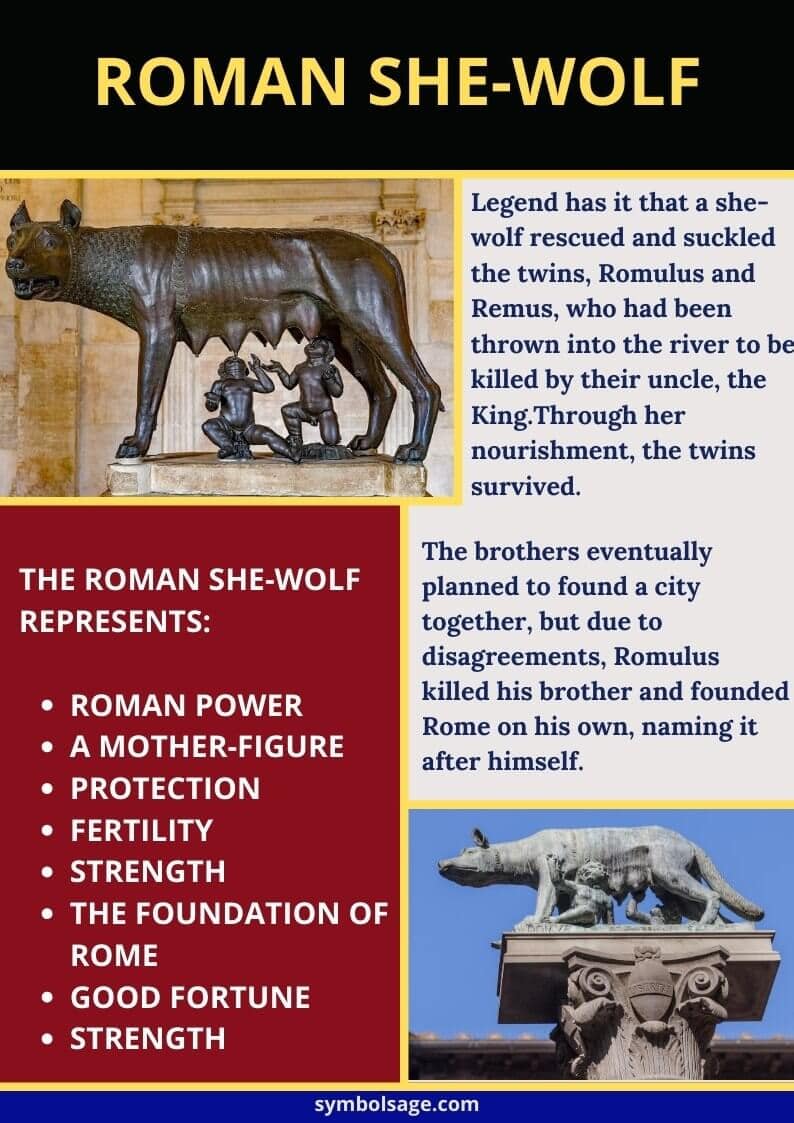
The Importance and Symbolism of the Roman SheWolf
Description The Capitoline She-wolf (Italian: Lupa capitolina) takes its name from its location—the statue is housed in the Capitoline Museums in Rome. The She-wolf statue is a fully worked bronze composition that is intended for 360 degree viewing.
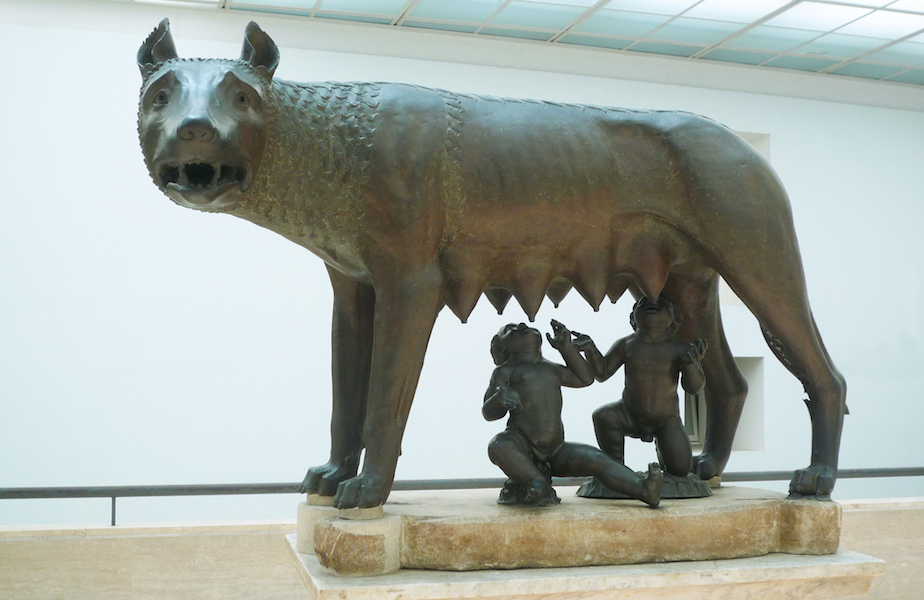
The Capitoline SheWolf Rome’s Eternal Symbol Brewminate A Bold
Romulus and Remus suckling a she-wolf on the bank of the Tiber River (foreground) and being handed to Acca Larentia by Faustulus (background), detail of an illuminated manuscript page from the Romuléon by Benvenuto da Imola, 1480; in the British Library, London. (more)

Capitoline SheWolf (Lupa capitolina). Rome, Capitoline Museums
In the Roman foundation myth, a she-wolf ( lupa in Italian) was an Italian wolf who nursed and sheltered the twins Romulus and Remus after they were abandoned in the wild by decree of King Amulius of Alba Longa. She cared for the infants at her den, a cave known as the Lupercal, until they were discovered by a shepherd, Faustulus.
FileShewolf of Rome.JPG Wikipedia
By By Frances D'emilio She suckled Rome's legendary twin founders and fed Benito Mussolini's ambitious dreams of renewed imperial glories. For centuries, the she-wolf has been one of.

Rome shewolf (Capitoline Wolf) in Capitoline museum, "lup… Flickr
The Roman she-wolf is an iconic symbol of Rome. She's often featured as a female gray wolf nursing two human boys, believed to be the twins Remus and Romulus. This image is depicted in many Roman artwork, including statues and paintings.
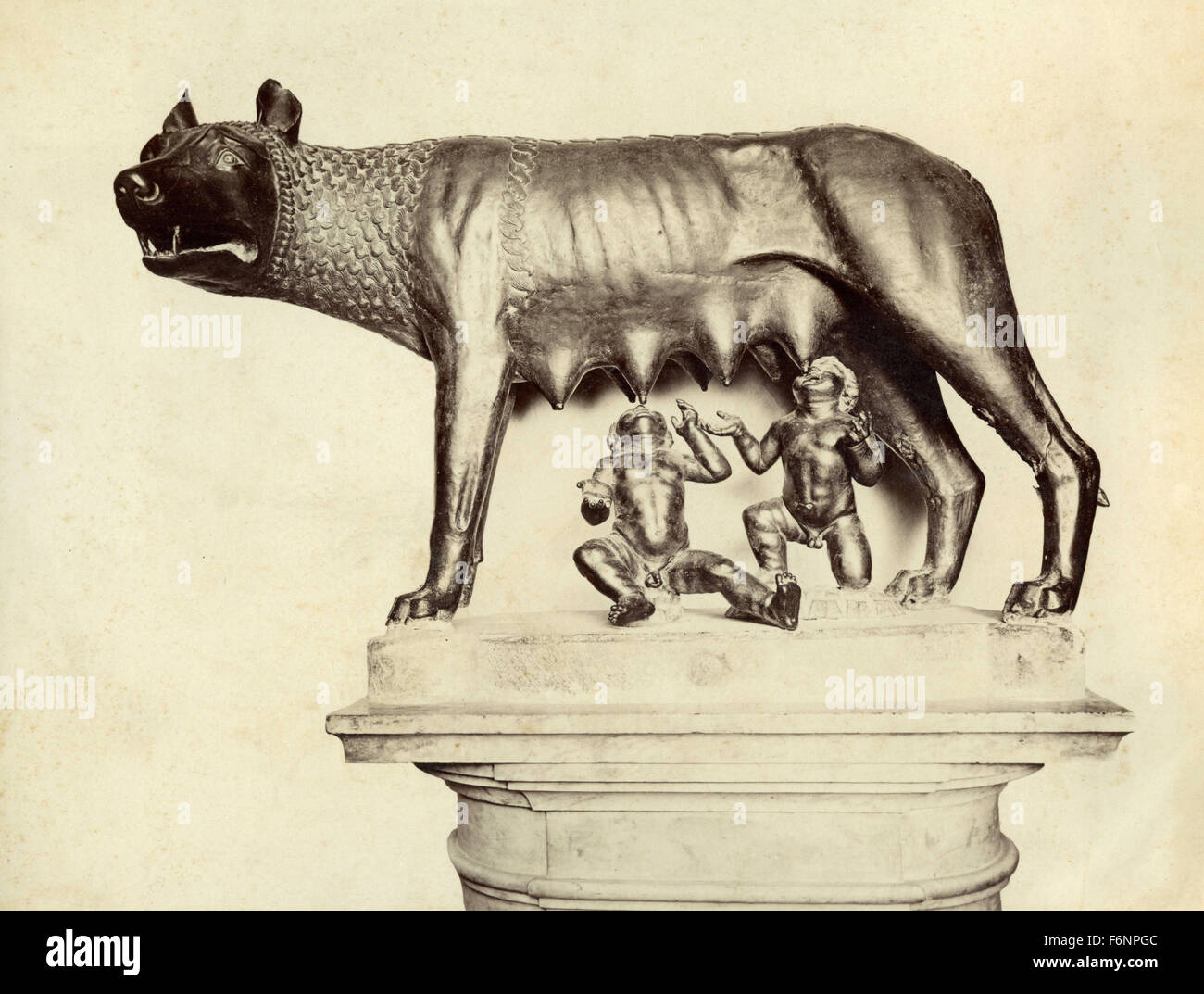
Capitoline sheWolf, Rome, Italy Stock Photo Alamy
The Capitoline She-wolf (Italian: Lupa capitolina) takes its name from its location—the statue is housed in the Capitoline Museums in Rome. The She-wolf statue is a fully worked bronze composition that is intended for 360 degree viewing. In other words the viewer can get an equally good view from all directions: there is no "correct" point of view.
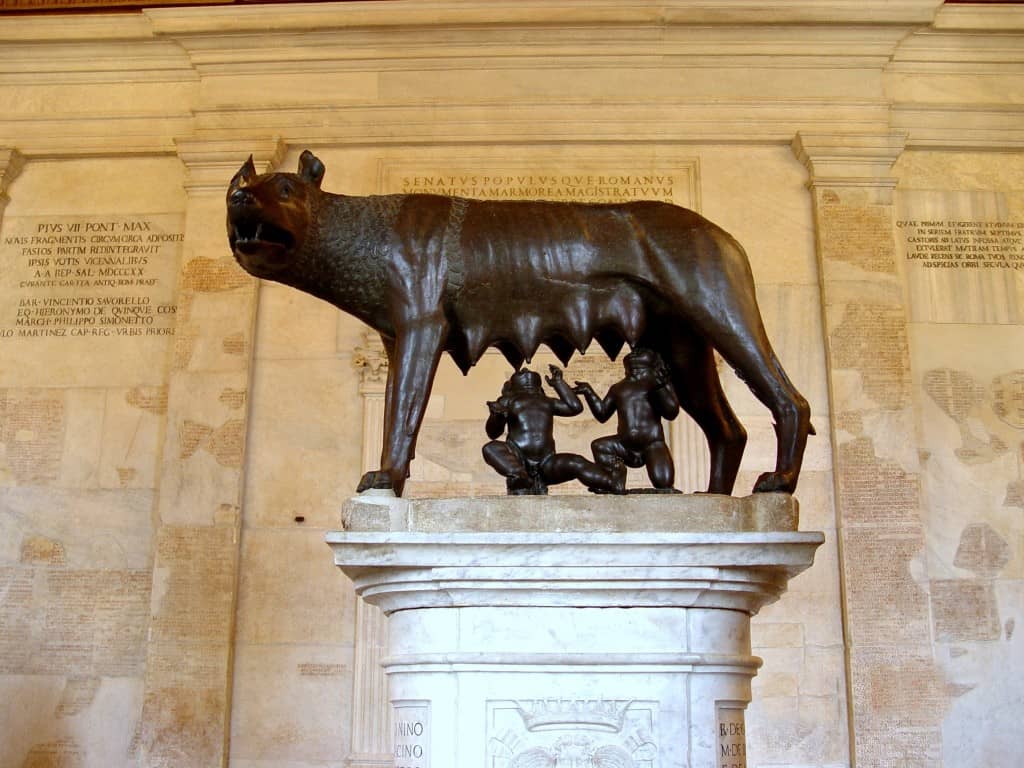
Fab Photos Friday A Path through Rome Travels with Tam!
An iconic representation of Rome, the she-wolf is frequently depicted as a female gray wolf suckling the human twins, said to be Remus and Romulus, the latter being the founder and first king of this mighty city. The Roman she-wolf is symbolic of a lot of things. For one, it signifies the Roman power.

Shewolf, Rome by Chobbnobs15 on DeviantArt
The Rome she wolf has a story that goes back to the legend of the foundation of Rome and her statue can be seen in the Capitoline Museums and well as in many other locations in the city. This is all you need to know about the Capitoline she-wolf of Rome.

Capitoline Shewolf. Rome, Capitoline Museums, Palazzo dei Conservatori
The Capitoline Wolf ( Italian: Lupa Capitolina) is a bronze sculpture depicting a scene from the legend of the founding of Rome. The sculpture shows a she-wolf suckling the mythical twin founders of Rome, Romulus and Remus.

The SheWolf of Rome Rome, Time travel, Favorite city
Ever since the middle of the 16th century, when it was an open three-arched loggia, this room has contained the bronze Capitoline She-wolf, which has become the symbol of Rome.

Capitoline SheWolf (Lupa capitolina). Rome, Capitoline Museums
Since antiquity, the she-wolf has served as the potent symbol of Rome. For more than two thousand years, the legendary animal that rescued Romulus and Remus has been the subject of historical and political accounts, literary treatments in poetry and prose, and visual representations in every medium. In She-Wolf: The Story of a Roman Icon, Cristina Mazzoni examines the evolution of the she-wolf.
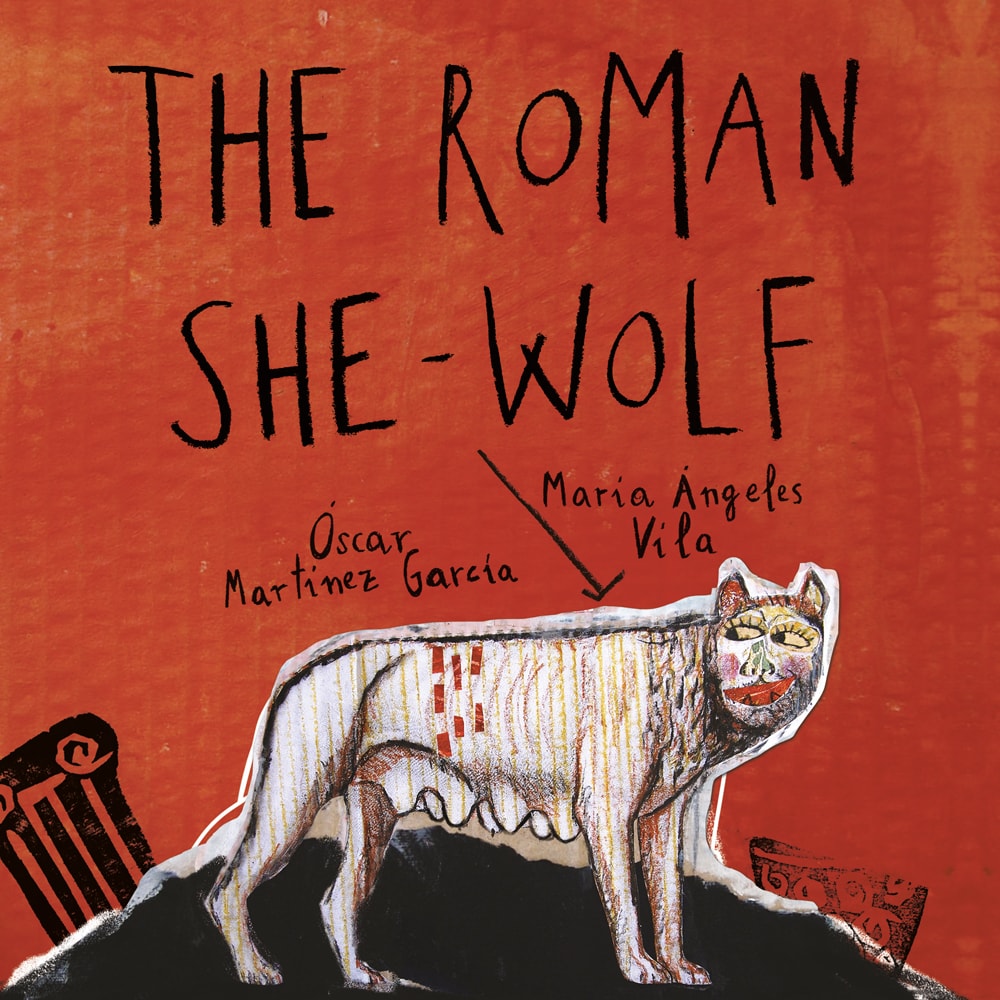
The Roman SheWolf a tale for children about the birth of Rome
(62) This foray into modern reproduction and misinterpretation provides a meaningful segue into Chapter 3, which focuses on the embarrassing and at times amusing associations arising from the Lupa 's increasing familiarity in modern times.
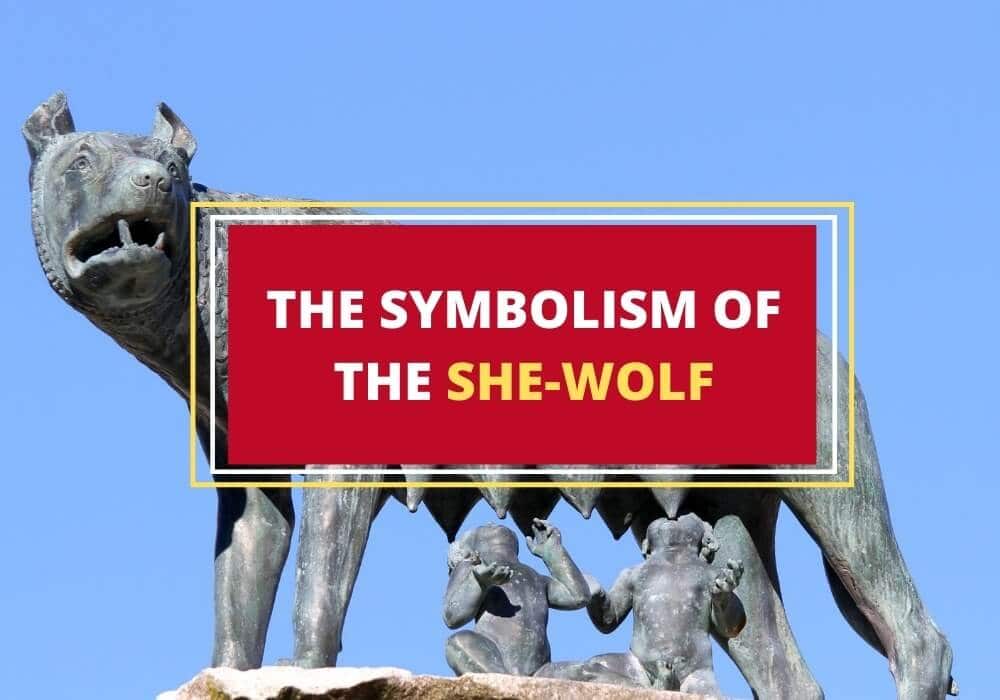
The Importance and Symbolism of the Roman SheWolf
The She-wolf is the symbol of the city of Rome. It is one of the ancient symbols of Rome associated with its mythology and founding story. It is a symbol that can be seen throughout Italy and Rome. The Capitoline Wolf takes its name from where it is housed in the Capitoline Museums in Rome.

Highlights of the Capitoline Museums in Rome — ARW Travels
Since antiquity, the she-wolf has served as the potent symbol of Rome. For more than two thousand years, the legendary animal that rescued Romulus and Remus has been the subject of historical and political accounts, literary treatments in poetry and prose, and visual representations in every medium. In She-Wolf: The Story of a Roman Icon, Cristina Mazzoni examines the evolution of the she-wolf.

Capitoline Shewolf. Rome, Capitoline Museums, Palazzo dei Conservatori
Description. The Capitoline She-wolf (Italian: Lupa capitolina) takes its name from its location—the statue is housed in the Capitoline Museums in Rome.The She-wolf statue is a fully worked bronze composition that is intended for 360 degree viewing. In other words the viewer can get an equally good view from all directions: there is no "correct" point of view.
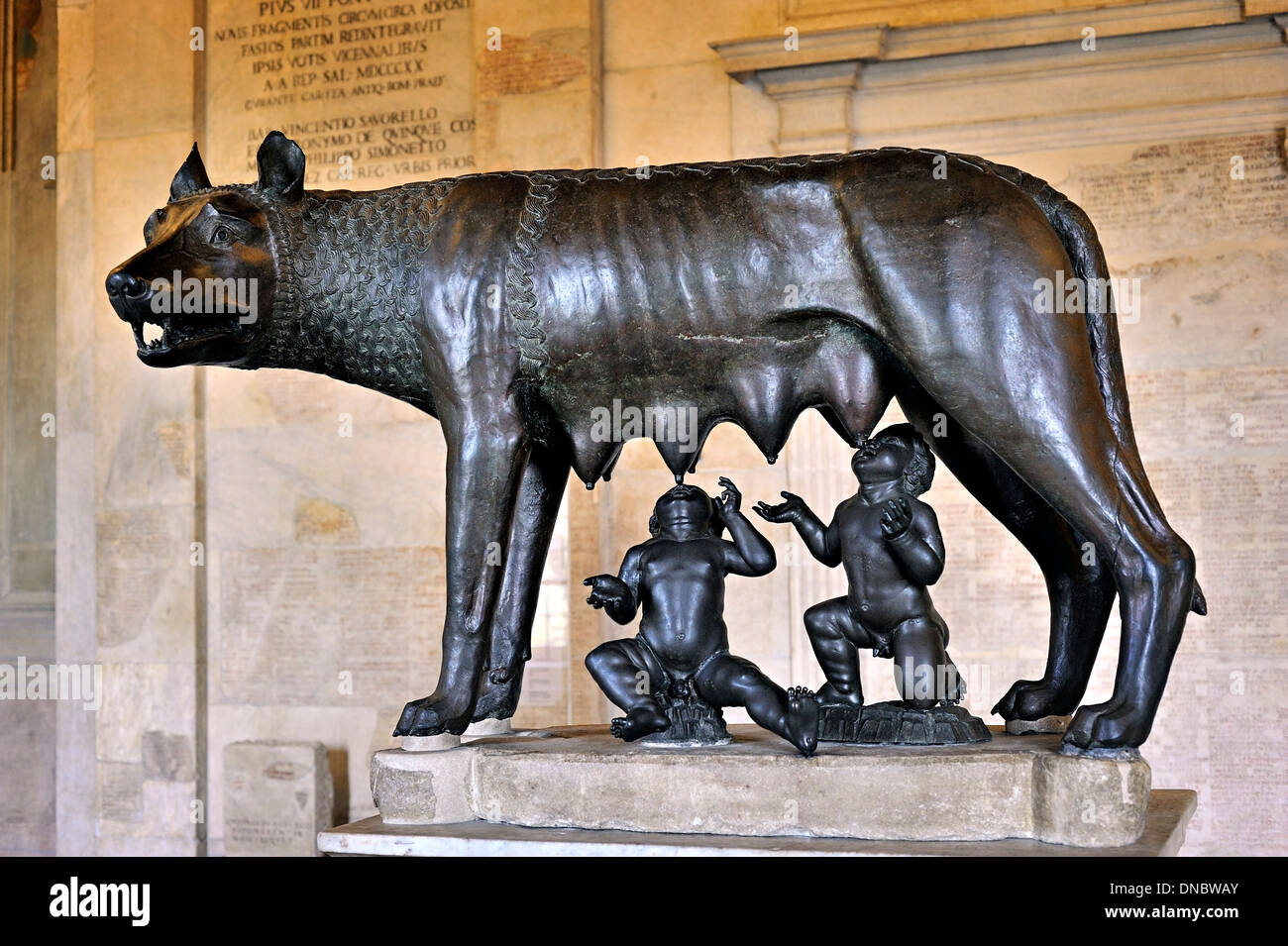
Capitoline she wolf hires stock photography and images Alamy
Since antiquity, the she-wolf has served as the potent symbol of Rome. For more than two thousand years, the legendary animal that rescued Romulus and Remus has been the subject of historical and political accounts, literary treatments in poetry and prose, and visual representations in every medium.